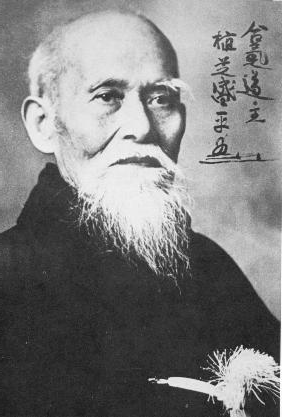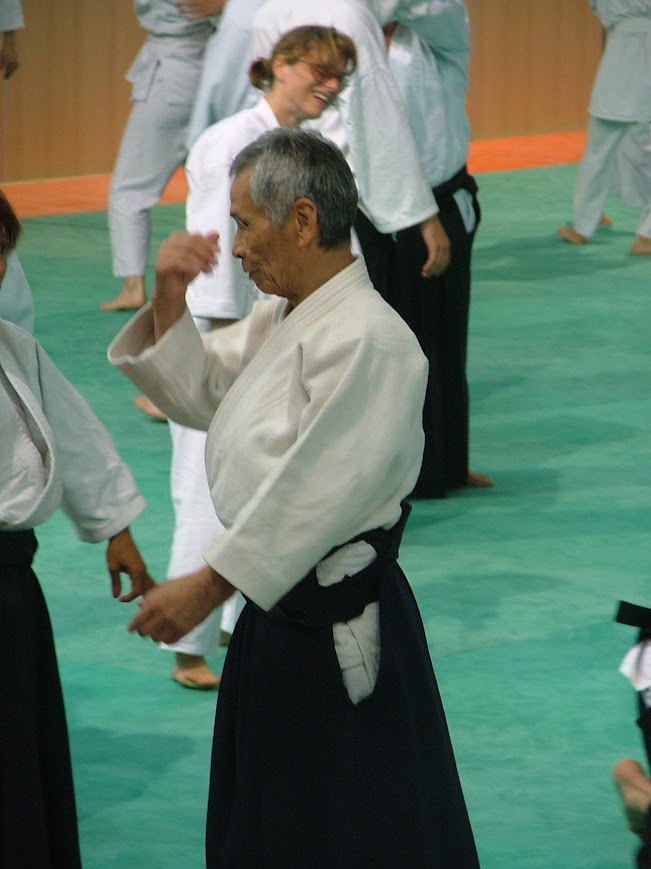Aikido
Aikido is a martial art developed by o-sensei Ueshiba Morihei (1883-1969), whose roots lie in the traditional budo systems of Japan. The discipline includes techniques with bare hands as well as working with wooden weapons.
We, the Aikidoka, strive to gain control over our partner (called tori or aite) without using superfluous or brute force. Instead, we redirect the attacking energy and thus bring aite out of balance. By harmonizing body movements – instead of confronting them – influencing factors such as size, strength, body weight or number of aite ultimately lose their significance.


The nature of Aikido is peaceful
The basic principles of the discipline that make all this possible are internalized through continuous physical and mental training. The nature of Aikido is absolutely peaceful, tends to be defensive – but not passive. There are no competitions or championships.
The video shows the founder of Aikido, o-sensei Ueshiba Morihei:
We also consider the teachings and work of Tamura Nobuyoshi shihan (1933-2010) to be particularly valued. He was a direct disciple of o-sensei and also one of his most capable and appreciated. From 1964 on he moved his centre of life to France. From then on he contributed significantly to the development and spread of Aikido, especially in Europe.
The leader (dojo-cho) of Aikido Yuyashinkai, Fritz Schneeberger, was lucky enough to experience him in 2006 and 2008 during training courses.
Tamura Nobuyoshi shihan at one of his last courses in 2010:
Further information about Aikido can be found in the corresponding entry on the Aikikai’s homepage or by visiting the training and/or a personal conversation with the teacher.
Aikikai Grading System
Which requirements are valid for which examination (kyu- and dan-grades) is regulated in detail by the Aikikai. Here you can download the official graduation system as pdf-document.